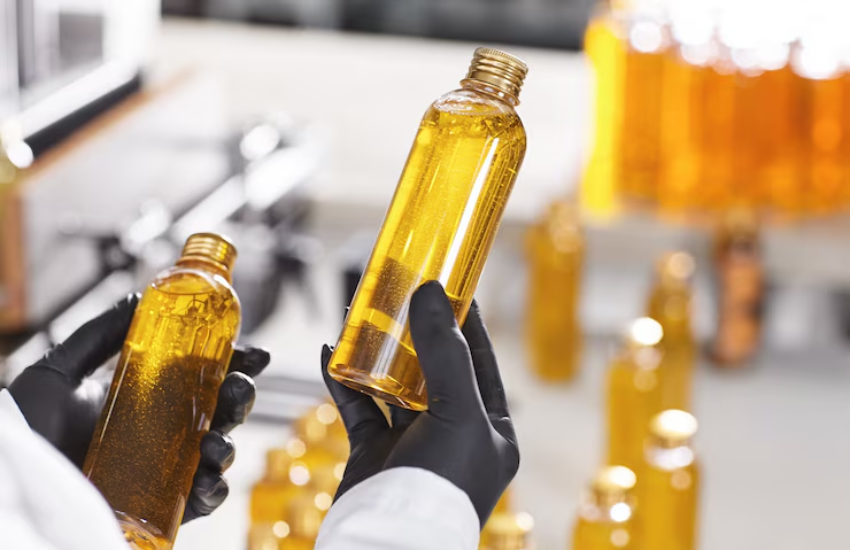Notifications

7 minutes, 4 seconds
-20 Views 0 Comments 0 Likes 0 Reviews

For any farm or agricultural business, stored agricultural oil is a vital resource. Whether it's diesel for tractors, lubricants for machinery, or hydraulic oils for various implements, these oils play a critical role in day-to-day operations. However, what’s often overlooked is how long that oil remains effective—and safe to use—once it’s stored. One of the most important but frequently neglected practices is routine testing of stored agricultural oil.
So, how often should you test stored agricultural oil?
The short answer: at least every six months. But the best answer is: it depends—on the type of oil, storage conditions, and how critical the application is. In this article, we'll explore why oil testing is crucial, what factors influence testing frequency, and the best practices for maintaining your stored oil in peak condition.
Agricultural oil doesn’t remain stable forever. Over time, it can degrade due to a variety of factors including oxidation, contamination, and water ingress. Using degraded oil can lead to:
Reduced machinery performance
Increased fuel consumption
Premature equipment wear and failure
Corrosion within systems
Expensive downtime and repair costs
Testing your stored oil not only protects your equipment but ensures you're getting the maximum value from every litre of oil purchased.
Let’s break down the main factors that affect how often stored oil should be tested:
Different types of oil degrade at different rates. For instance:
Diesel fuel (including red diesel) can start forming sediments or growing microbes if left untreated and untested beyond 6–12 months.
Lubricating oils, if stored properly, may last longer but still require testing every 6–12 months to check for oxidation and contamination.
Biodegradable oils or HVO are more sensitive to environmental conditions and should be tested more frequently—every 3–6 months.
Where and how you store your oil can dramatically impact its longevity. Key factors include:
Temperature fluctuations: Extreme heat or cold can break down oil molecules or cause water condensation in tanks.
Exposure to air: Oxygen accelerates oxidation.
Humidity: Moisture invites microbial growth, especially in fuels.
Contaminants: Dust, dirt, and even rust from tank interiors can degrade oil quality.
If your storage facility is uninsulated, outdoors, or near machinery generating vibrations, you may need to test your oil more frequently—possibly every 3–4 months.
If the oil has been stored for more than 6 months, especially without preservatives or stabilisers, it’s time for a quality check. Oils stored over a year should be tested before every use, especially in high-performance agricultural machinery.
Some oils are drawn from and replaced regularly, while others sit for long periods. Frequent usage may reduce the need for testing, especially if turnover is high. However, oils used occasionally but stored for extended durations need periodic checks to ensure stability.
Testing stored agricultural oil involves more than just looking at the colour or sniffing for odd smells. A full analysis may include:
Water content
Particulate contamination
Oxidation level
Viscosity
Microbial contamination (particularly in diesel fuels)
pH levels (for lubricants)
This can be done through onsite test kits for basic diagnostics or by sending samples to a certified lab for comprehensive analysis.
Skipping oil tests might save a few pounds in the short term, but the long-term costs can be significant:
Replacing an engine due to lubricant failure can cost thousands.
Fuel contamination may lead to injector clogging, filters choking, and fuel pump damage.
Hydraulic systems that rely on clean oil for precision can malfunction, leading to unsafe working conditions.
Routine testing becomes a form of insurance for your machinery—and your productivity.
To make oil testing part of your operational routine, consider the following tips:
Create a Testing Schedule
Set calendar reminders or integrate testing into your seasonal maintenance checklist.
Label and Date Your Oil Supplies
Know exactly when oil was stored and where it came from. This helps trace potential issues back to source.
Use High-Quality Containers and Storage Units
Ensure tanks are sealed, clean, and inspected regularly for leaks or corrosion.
Use Fuel and Oil Additives Wisely
Stabilizers and biocides can extend storage life, but they don’t replace regular testing.
Keep Records
Maintain logs of test results and inspections. This creates a benchmark for performance and helps diagnose recurring issues.
Train Staff
Make sure team members handling machinery understand the importance of oil quality. They should be trained to identify early signs of oil degradation.
In the world of modern agriculture, productivity, efficiency, and reliability are non-negotiable. Stored agricultural oil is the lifeblood of your machinery, and keeping it in optimal condition starts with regular testing. While the general rule is to test every six months, consider testing more frequently if conditions are less than ideal.
Investing a little time and money into oil testing today can save you from expensive repairs, lost time, and frustrated growing seasons tomorrow.

